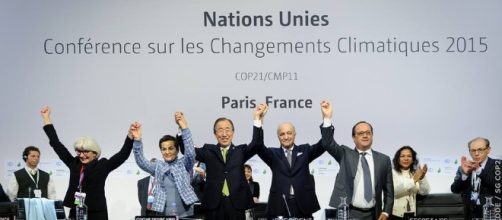climate change took an all-important step on the 3rd September 2016. The G20 met in the city of Hangzhou for the 2016 summit, with important climate change announcements happening as various leaders arrived. The Paris Climate Conference (COP21) in 2015, saw 195 countries adopt the first-ever universally, legally binding global climate deal, the Paris Climate Agreement.
In December, 2015, 195 nations agreed the Paris Climate Agreement. Due to come in effect in 2020, the basics of the agreement is to track global climate temperature.
This is to avoid dangerous climate change, by limiting climate increase to 2 per cent.
One small step
The important step that took place before the start of the G20 summit as the the USA and China, the two biggest contributors to emissions (40%) ratifying the agreement, meaning that they are both formally joining the agreement. The reason this is a big step, is because the previous 23 nations that had formally ratified it, only contributed to 1% of carbon emissions globally. With the UK formally ratifying the agreement on 17th November 2016, lagging well behind other global leaders.
The required threshold for the deal to come into force was achieved on 5th October 2016, a month later the agreement officially came into force on 4th November 2016.
With the first official session of the Conference of the Parties, serving as the Meeting of the Parties to the Paris Agreement, taking place in Marrakech, Morocco from the 15th-18th November 2016. During which is when the UK finally decided to sign and ratify the agreement.
Key elements of the deal
The deal consists of various elements and the European Commission states that the key elements consist of the governments have agreed to a long-term goal of reducing emissions, with an increase global average target of well below 2°C of pre-industrial levels.
The aim is to limit the increase to 1.5°C to reduce the impact of climate change significantly. With transparency being high on the agenda, there will be a “come together” that will occur every 5 years and include a report on how well the targets are being implemented, track progress towards the long-term goal and set greater targets that match the ambition of the deal.
Developing countries require more support and by providing this, it can strengthen the global communities’ ability to combat the impacts of climate change. The support given to developing countries from developed countries would be encouraged to be given voluntarily. 100 billion USD per year are to be mobilised by developed countries by 2020, extended until 2025, with a more ambitious goal set after this period. There is a recognition within the agreement that highlights the importance of addressing the adverse effects of climate change, the inclusion of early warning systems etc. acknowledges the need for global cooperation.
The Kigali Agreement
It wasn’t just the Paris Climate Agreement that was officially ratified in 2016 but an amendment to the Montreal Protocol, the Kigali Agreement, that substantially limits the emission of hydrofluorocarbons (HFCs), which greatly contribute to climate change.
Limiting the use of HFCs, that are used in refrigerators and air conditioning units, could greatly reduce global warming because without mitigation HFCs could warm the planet by half a degree Celsius by the end of the century.
2016 was not all doom and gloom and did present a step in the right direction for tackling climate change, but it is something that must been continued and pursued more rigorously in 2017.

